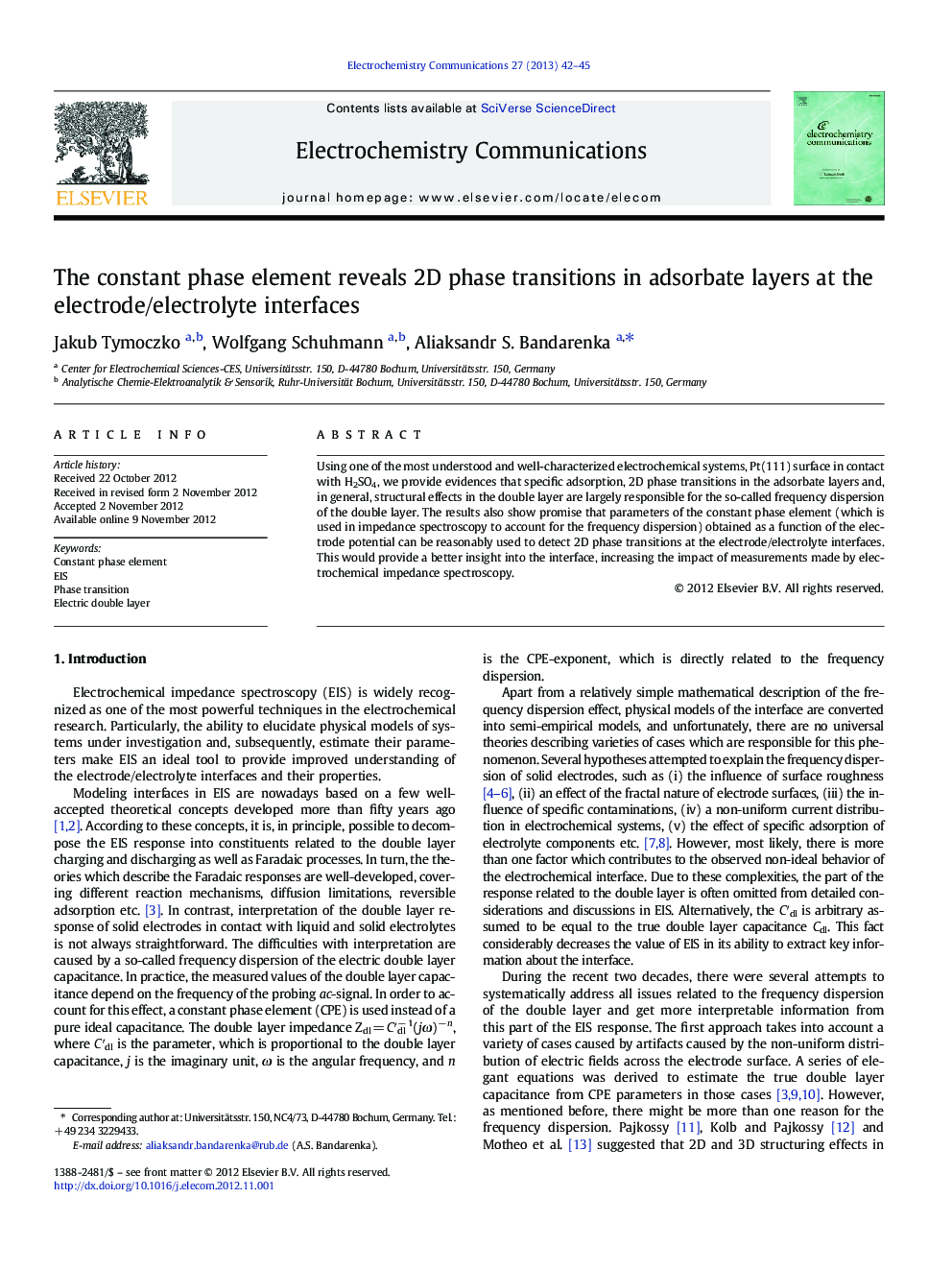| Article ID | Journal | Published Year | Pages | File Type |
|---|---|---|---|---|
| 179529 | Electrochemistry Communications | 2013 | 4 Pages |
Using one of the most understood and well-characterized electrochemical systems, Pt(111) surface in contact with H2SO4, we provide evidences that specific adsorption, 2D phase transitions in the adsorbate layers and, in general, structural effects in the double layer are largely responsible for the so-called frequency dispersion of the double layer. The results also show promise that parameters of the constant phase element (which is used in impedance spectroscopy to account for the frequency dispersion) obtained as a function of the electrode potential can be reasonably used to detect 2D phase transitions at the electrode/electrolyte interfaces. This would provide a better insight into the interface, increasing the impact of measurements made by electrochemical impedance spectroscopy.
Graphical abstractFigure optionsDownload full-size imageDownload as PowerPoint slideHighlights► CPE when used to model the double layer reveals structural effects at the electrochemical interface. ► 2D phase transitions in the adsorbed (bi)sulfate layer at Pt(111) decrease the CPE-exponent values. ► The parameters of the CPE can be used to detect structural effects in the double layer.
